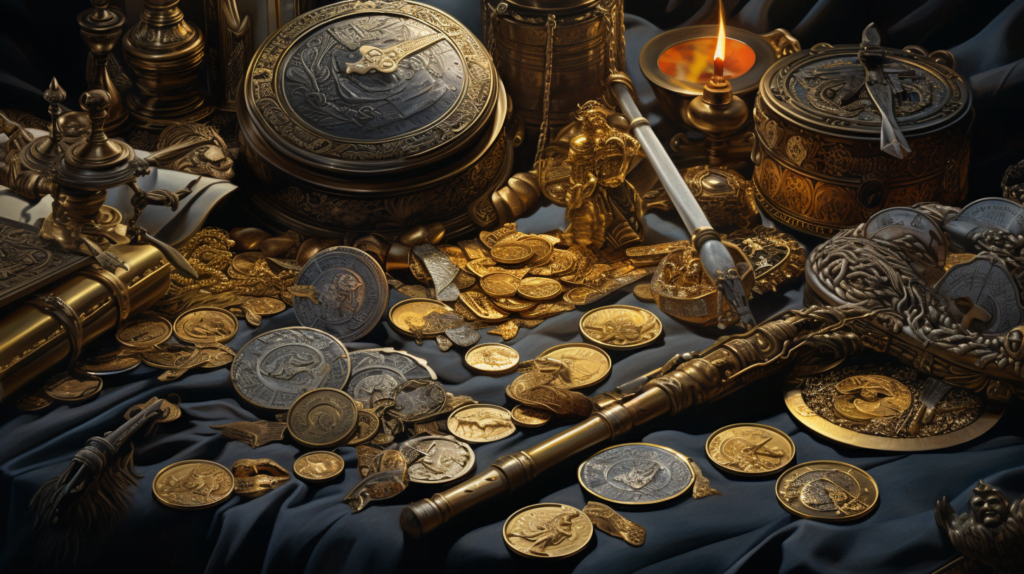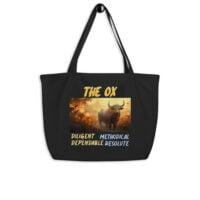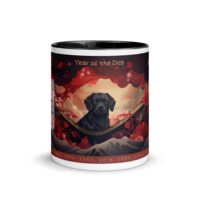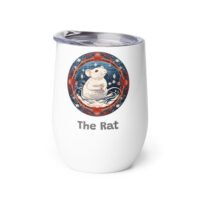Cosmic Gifts Cart
- No products in the cart.
Subtotal:
US $0.00
BEST SELLING PRODUCTS
US $18.88 – US $19.38
US $21.88
US $37.25
US $37.25
US $25.00 US $25.00
The Chinese Zodiac, known as “生肖” (shēng xiào) in Mandarin, is an integral part of Chinese culture, weaving together history, astrology, and mythology into a vibrant tapestry that has captivated the hearts and minds of people not only in China but across the globe. Rooted in ancient traditions, this cyclical system is based on a 12-year rotation, with each year symbolized by a unique animal. But it’s not just about telling time; each animal carries with it a myriad of characteristics, stories, and significance, influencing the personalities and destinies of those born under its sign.
While many in the Western world are familiar with the zodiac system based on monthly constellations, the Chinese Zodiac offers a different perspective, focusing on yearly cycles and a close connection to Chinese lunar calendar events, most notably, the Chinese New Year. The allure of the Chinese Zodiac extends beyond mere curiosity; it’s a reflection of ancient wisdom, cultural identity, and a tool for understanding oneself and the world around.
For thousands of years, these zodiac symbols have guided countless decisions, from marriage and career choices to monumental national endeavors. The global fascination with these signs reflects a universal human desire to connect with ancient wisdom and traditions, seeking guidance and understanding through the stories of the past.
In the pages that follow, we will delve deep into the heart of the Chinese Zodiac, exploring its history, significance, and the characteristics that define each sign. Whether you’re seeking to understand your own sign, looking for a thoughtful gift for a loved one, or simply curious about this ancient system, our journey through the Chinese Zodiac promises insights, surprises, and a deeper appreciation for this millennia-old tradition.
The Chinese Zodiac, with its rich and intricate layers, is much more than just a cycle of animals; it’s a window into the soul of ancient Chinese civilization. Unraveling its history is like unfolding a timeless tale, one that weaves together legend, spirituality, and the human endeavor to understand time and fate.
Origins and Ancient Myths
The precise origins of the Chinese Zodiac remain shrouded in mystery, but one of the most cherished legends is the story of the Great Race. According to this tale, the Jade Emperor, the ruler of Heaven, decided to create a system to measure time. To select the animals that would represent this system, he organized a race. The first twelve animals to cross the finish line would be immortalized in the zodiac cycle.
In this spirited competition, each animal showcased its unique traits. The cunning Rat, hitching a ride on the diligent Ox’s back and jumping ahead at the last moment, secured the first position. The Tiger, with its strength, and the Rabbit, with its agility, followed suit. The Dragon, despite its ability to fly, came fifth, having stopped to help some villagers. This act of kindness was followed by the Horse, the Goat, the Monkey, the Rooster, the Dog, and lastly, the Pig.
Through this race, each animal secured its place in the cycle, but more importantly, the story underscored values dear to Chinese culture: ingenuity, hard work, kindness, and the idea that everyone, regardless of size or strength, has a role in the grand tapestry of life.
Evolution and its Significance Throughout Chinese History
While legends provide a colorful backdrop, the zodiac’s true roots likely lie in ancient agrarian practices. The twelve animals might have been totems representing different tribes, eventually coalescing into a unified system under the Shang and Zhou dynasties, reflecting the unity of the Chinese nation.
Throughout various dynasties, the zodiac played roles beyond mere timekeeping. It guided agricultural activities, with each animal associated with a specific time of the year, dictating when to sow and when to harvest.
The Chinese Zodiac also became deeply intertwined with people’s daily lives. It influenced major life decisions like marriage and business partnerships. By the Tang and Song dynasties, zodiac-inspired art, literature, and sculptures had flourished, further entrenching its cultural significance.
The system also proved adaptable. As Buddhism made its way into China, the zodiac seamlessly integrated Buddhist ideas, reflecting China’s ability to absorb and harmonize different cultural influences.
Each of the twelve animals in the Chinese Zodiac is unique, with its own set of characteristics, strengths, and weaknesses. These traits are believed to influence the personalities of those born under each sign. Let’s take a closer look:
10. Rooster (or Chicken) (鸡, Jī)
People across the world, whether they believe in astrology or not, are intrigued by the characteristics associated with their zodiac signs. This fascination is even more pronounced with the Chinese Zodiac because it encapsulates a combination of ancient wisdom, animal attributes, and cultural beliefs. As we journey through each animal sign, we’ll uncover layers of meaning, historical significance, and the enduring appeal of this ancient system.
In traditional Chinese philosophy, the universe is composed of five fundamental elements: Wood, Fire, Earth, Metal, and Water. These elements, or “Wu Xing” (五行), represent different phases or changes in nature and are deeply interconnected with the Chinese Zodiac, influencing each animal’s characteristics, behavior, and destiny.
1. Wood (木, Mù)


2. Fire (火, Huǒ)
3. Earth (土, Tǔ)


4. Metal (金, Jīn)
5. Water (水, Shuǐ)

Interplay of Elements:Just as these elements have nurturing relationships (like Wood feeding Fire), they also have controlling or destructive relationships (like Water extinguishing Fire). These dynamics greatly influence compatibility, behaviors, and even fortune predictions in Chinese astrology.
The Chinese Zodiac, known as “生肖” (Shēngxiào), has held a central place in Chinese culture for millennia. Far more than just symbolic creatures, these zodiac signs have deeply influenced personal identities, societal norms, and cultural practices.
1. Personal Identity & Behavior:
2. Social Interactions & Relationships:
3. Cultural Festivities & Celebrations:
4. Art, Literature, & Media:
5. Economic Impacts:
6. Spiritual & Religious Significance:
Conclusion: The Chinese Zodiac is deeply woven into the fabric of Chinese culture, shaping individual identities and influencing societal norms. Its presence can be felt in everyday life, festive celebrations, art, and commerce, demonstrating its enduring relevance and significance.
The concept of zodiac compatibility plays an essential role in Chinese culture, especially when it comes to relationships, friendships, and even business partnerships. While it’s recognized that every individual is unique, the zodiac provides general guidance on harmonious pairings.
1. Best Matches for Each Sign:
2. Compatibility Considerations:
3. Beyond Romance: Friendships and Business:
4. It’s Not All in the Stars:
1. Pop Culture Influence:
2. Fashion & Design:
3. Technology & Gaming:
4. Events & Festivals:
5. Business & Marketing:
Conclusion: Even as the world becomes increasingly digital and modern, the allure of the Chinese Zodiac remains strong. Its adaptability and deep cultural roots ensure that it continues to find relevance in various facets of modern life. Whether through art, commerce, technology, or entertainment, the Chinese Zodiac’s stories and symbols remain an integral part of both Eastern and Western cultures.
For your online store, this section could benefit from visuals and infographics highlighting the zodiac’s influence across different sectors, further engaging visitors with its rich history and modern interpretations.
The allure of the Chinese Zodiac extends far beyond just cultural significance. For businesses, it represents a lucrative opportunity to tap into a market that values both tradition and novelty. Here’s an exploration of how the zodiac has been commercialized through collectibles and merchandise.
1. Precious Metals and Coins:
2. Stamps and Philately:
3. Art and Handicrafts:
4. Fashion and Apparel:
5. Home and Lifestyle:
6. Toys and Novelties:
Conclusion: The Chinese Zodiac’s blend of rich history, cultural significance, and universal appeal makes it a perfect candidate for diverse merchandise. For businesses, it’s an opportunity to infuse products with a sense of tradition while appealing to a wide market.
For many, the Chinese Zodiac isn’t just about knowing the animal that corresponds to their birth year. It’s a journey into understanding one’s intrinsic nature, tendencies, and potential life path. Here’s a closer look at what one’s zodiac sign can reveal:
1. Personality Traits:
2. Strengths and Weaknesses:
3. Suitable Careers:
4. Health Insights:
5. Love and Relationship Dynamics:
6. Life Challenges and Opportunities:
Conclusion: The Chinese Zodiac isn’t merely about categorizing individuals into twelve signs. It’s a profound tool for introspection, guiding personal growth, understanding challenges, and realizing potential. Delving deep into one’s zodiac sign can provide illuminating insights into various life aspects.
While the Chinese Zodiac originates from East Asia, its appeal is truly global. This section explores how the zodiac has been embraced and celebrated across the world.
1. Celebrations Beyond Borders:
2. Inclusion in Popular Culture:
3. Fashion and Design:
4. Business and Commerce:
5. Culinary Adaptations:
6. Art and Exhibitions:
Conclusion: The Chinese Zodiac’s global influence is a testament to its timeless charm and universal themes. As cultures merge and interact, the zodiac’s symbols and stories find new homes, adapt to different contexts, and continue to enchant people of all backgrounds.
Introduction to the Lunar Calendar:
The Chinese Lunar Calendar, also known as the “agricultural calendar” (農曆), is a lunisolar calendar that incorporates both lunar phases and the solar year. It’s one of the oldest chronological records in history, tracing back over 4,000 years.
1. Lunar Months and Solar Year:
2. Chinese New Year and its Significance:
3. Traditions and Customs:
4. The Lantern Festival (元宵节):
5. Zodiac and the New Year:
Showing 1–8 of 120 results







